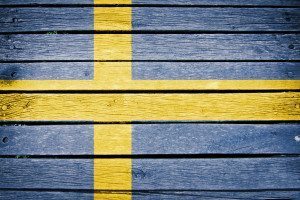Finding Your Swedish Ancestral Roots

Do you have Swedish ancestral roots? If so, you’re not alone. It’s estimated that approximately 1.2 million people emigrated from Sweden to the United States between the Civil War and the stock market crash of 1929. A wide variety of factors contributed to encouraging immigration, including limited land, agricultural troubles, and rising rates of unemployment in the homeland. Immigrants arrived through New York and other ports in the Eastern United States, as well as coming through Canada and then crossing into the US. If you’re interested in learning more about your Swedish ancestors but you’re daunted by the language barrier, here’s what you need to know.
Understanding Swedish Names
One helpful starting point for researchers navigating Swedish records is understanding how surnames worked. Approximately 90% of individuals were named via a patronymic naming system. For example, if a father’s name was Johan Albinsson, he is “Johan, son of Albin.” When Johan has children, they would be Sven Johansson (for a boy, Sven the son of Johan) and Alva Johansdotter (for girls, Alva the daughter of Johan) respectively. Swedish members of the clergy generally have Latinized names such as Lars Eriksson becoming Laurentius Erici and may also include their birthplace such as Lauentius Erici Wattrangious (Wattranfius for Vattrang). Some individuals took place names as their surnames or received names based on traits or regimens in the military to help differentiate between individuals with similar names. Women also often kept their own names upon marriage. Keep these conventions in mind when reviewing records.
Parish Information is Critical
For tracing your ancestors in Sweden, knowing their place of birth and where they lived is absolutely vital. This is true no matter what nationality your ancestors are, but it’s the key to finding the right records in Sweden. Most of the records collected were actually kept and managed by the Lutheran Church at the local parish level. There is no centralized Index to Swedish historical records even when national records exist, and civil officials didn’t start registering the information that they collected until the 1950s.
Lutheran Church Records
The Lutheran Church has been the dominant religious force in Sweden since the 16th century. Records kept by the church (known as kyrkoböcker) span from the 1500s onward. Often this information recorded births, baptisms, marriages, deaths, household surveys that list individual members, and who moved in and out of the parish. The cleric’s notes may have also included details about church accounts, disciplinary actions, and much more. Accessing these records begins with understanding what parish your ancestor was born in or lived in during his or her life.
Working backwards
The best way to learn more about your Swedish ancestors is to start with the present and work backwards. Many Swedish immigrants ultimately headed west to settle in areas such as Minnesota, Illinois, and Iowa. The settlers were drawn by the promise of land for homesteaders and higher wages. Passenger manifests from Sweden – usually departing from Gothenburg – often contain information about an immigrant’s birthplace. The census and naturalization details of your ancestors may also have that data. Another helpful source is looking to see if your ancestor joined a parish of the Lutheran Church here in the United States; often they recorded detailed information about where members emigrated from.
There are numerous collections of digitized records online for genealogical researchers interested in Sweden. One of the best places to start is the Swensen Swedish Immigration Research Center at Augustana College.
If you’re interested in learning more about your Swedish heritage and are struggling with the language barrier or other issues, a professional genealogist can help. Contact us today to arrange for a personalized consultation and to discuss how our services can help you find your Swedish ancestral roots.
